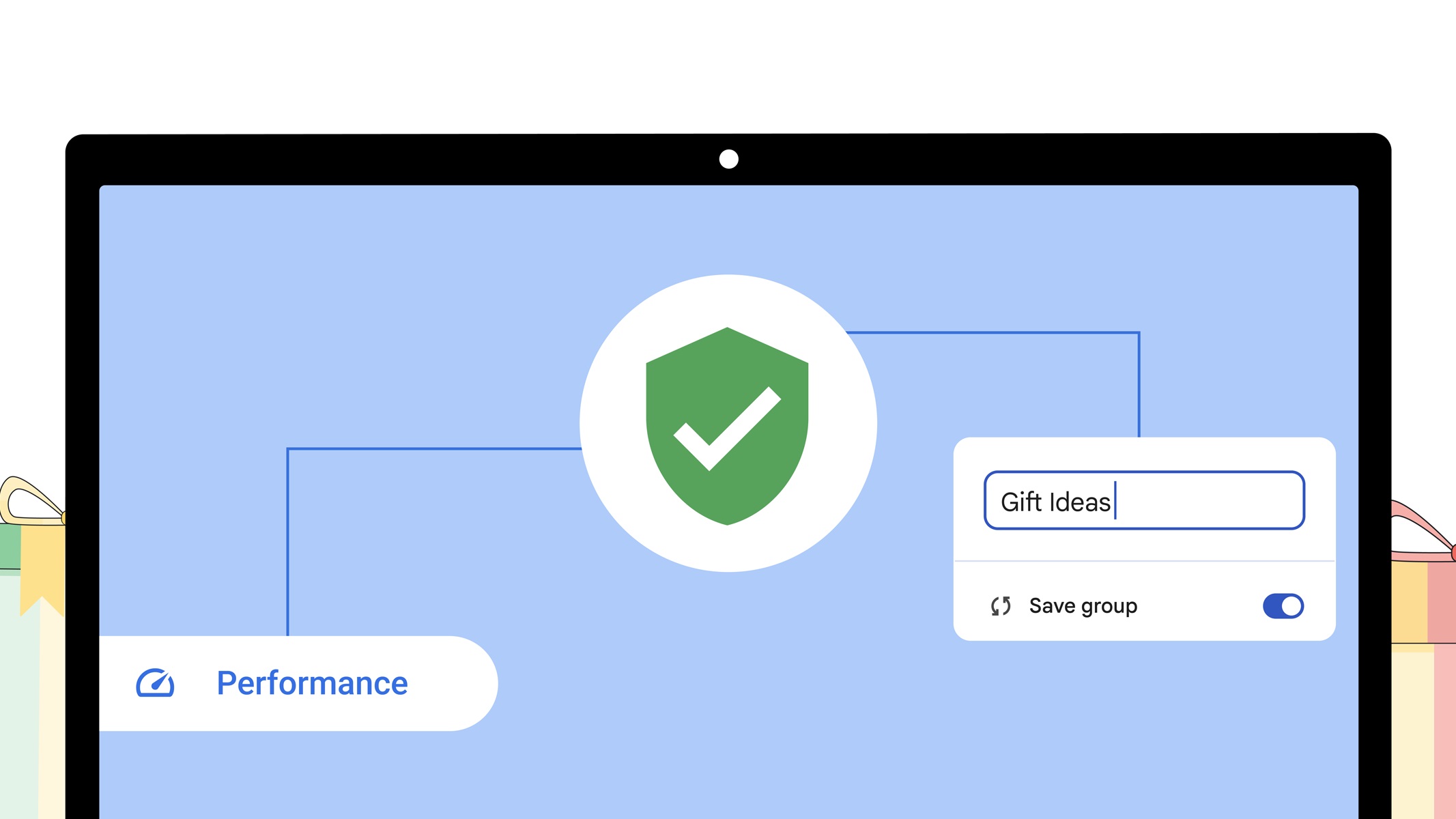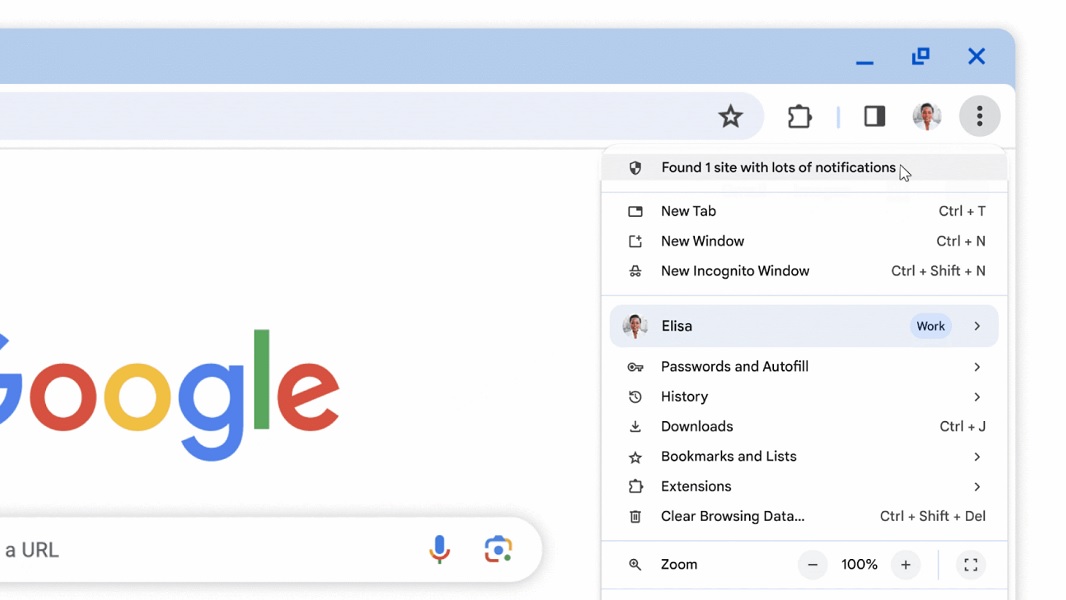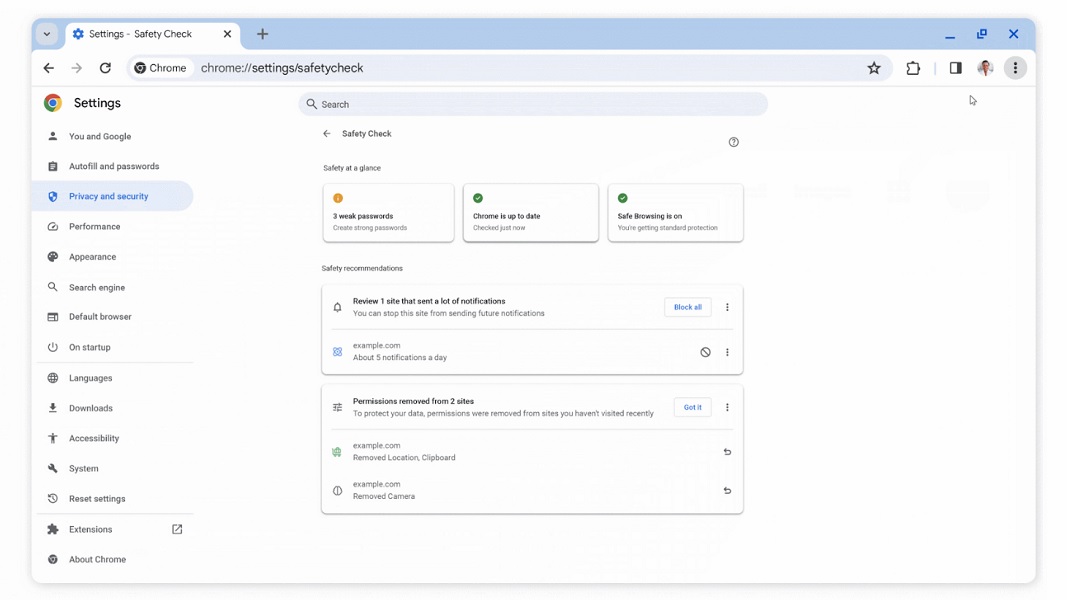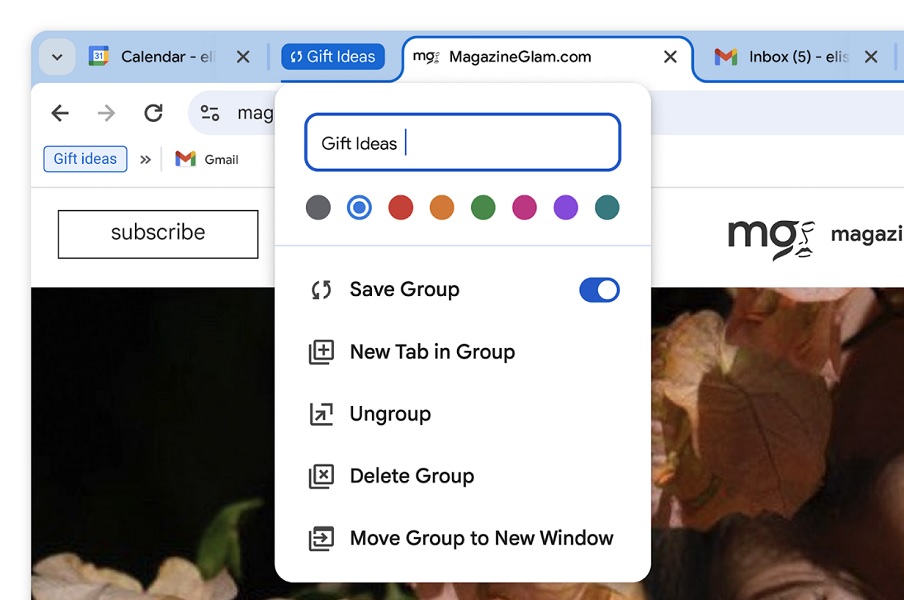
What you need to know
- Google begins rolling out version M120 for desktop Chrome users with an updated "Safety Check" feature that works consistently in the background.
- Users will gain alerts if their passwords have been compromised, for harmful extensions, and website permissions.
- Tab grouping on desktop gains a "save" function, letting users pick things up where they off on other devices.
Google is pushing an update for Chrome that should help strengthen users' browsing safety and improve performance.
As detailed in a press release, Chrome will begin receiving version M120 this week, an update that aims to refine Safety Check on desktop, allowing it to run automatically in the background. Alerts for this will be tucked away in the three-dot menu located on the top right of Chrome.
Users will be proactively alerted if their passwords have been compromised instead of having to dig into Safety Check to see if their passwords have been involved in any breaches. Additionally, users will be alerted if a downloaded extension is "potentially harmful," alongside warnings that Chrome is out-of-date and a notification about a website's permissions.


For peace of mind, Google states Chrome will now remove permissions you've given websites previously if you haven't visited them in a while. This includes revoking a site's access to your location or camera. A similar feature exists for Android phones where, if you haven't opened an app for a while, the software will remove any given permissions for security.
Chrome's improved Safety Check will also let users disable notifications from websites they rarely visit if they're receiving too many.
Additionally, an update to Chrome's tab groups will now let users "save" groups. Doing so will make the group available across all your connected devices, making it easy to pick up things easily on any device. The feature is rolling out "over the next few weeks" for desktop Chrome users.


Lastly, Google reiterates some improvements it recently brought to its Memory Saver mode in Chrome. Since introducing the mode in 2022, Memory Saver has functioned as a way to stop the browser from hogging all of your computer's memory when you're not surfing the web. Now, when hovering over a tab on desktop, users will see how much memory a tab is using in real-time.
Google states it has taken further strides to inform users of how much they'd save if the tab was inactive, alongside clear distinction for tabs it feels should remain open. To enable Memory Saver, head into the three-dot menu > Performance > Memory Saver.







